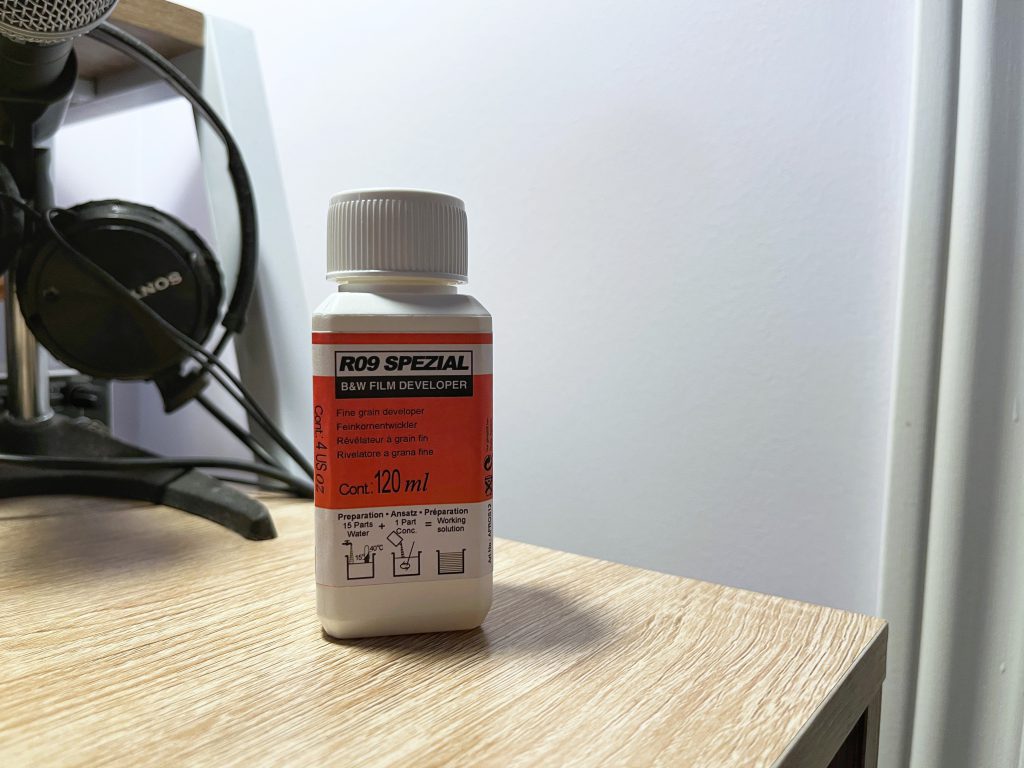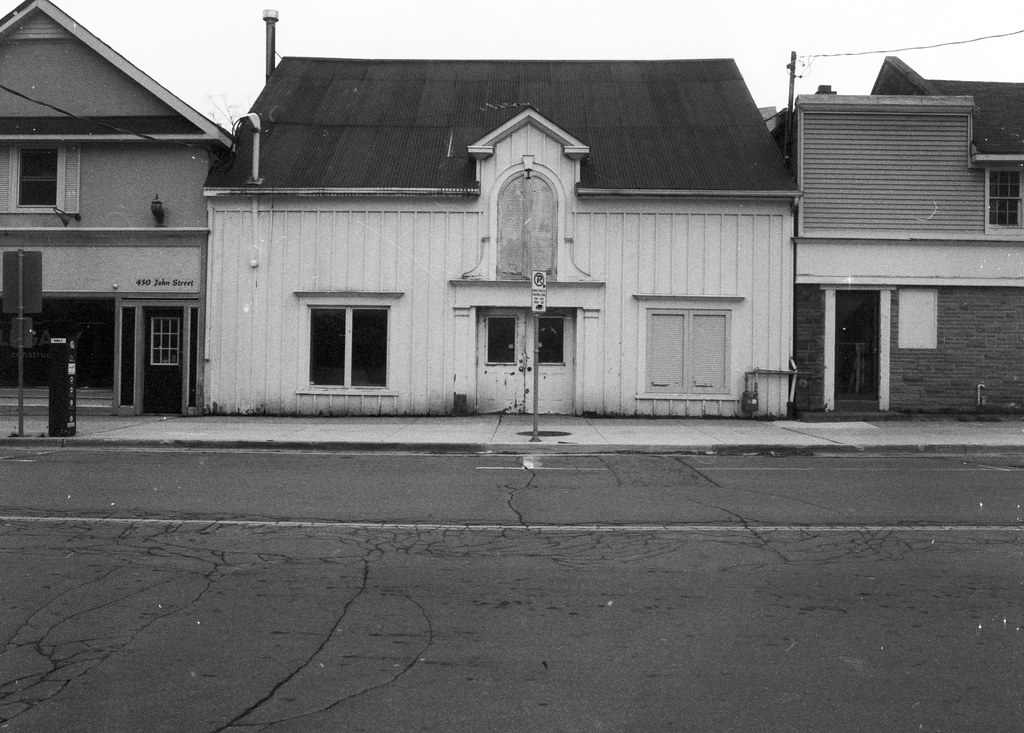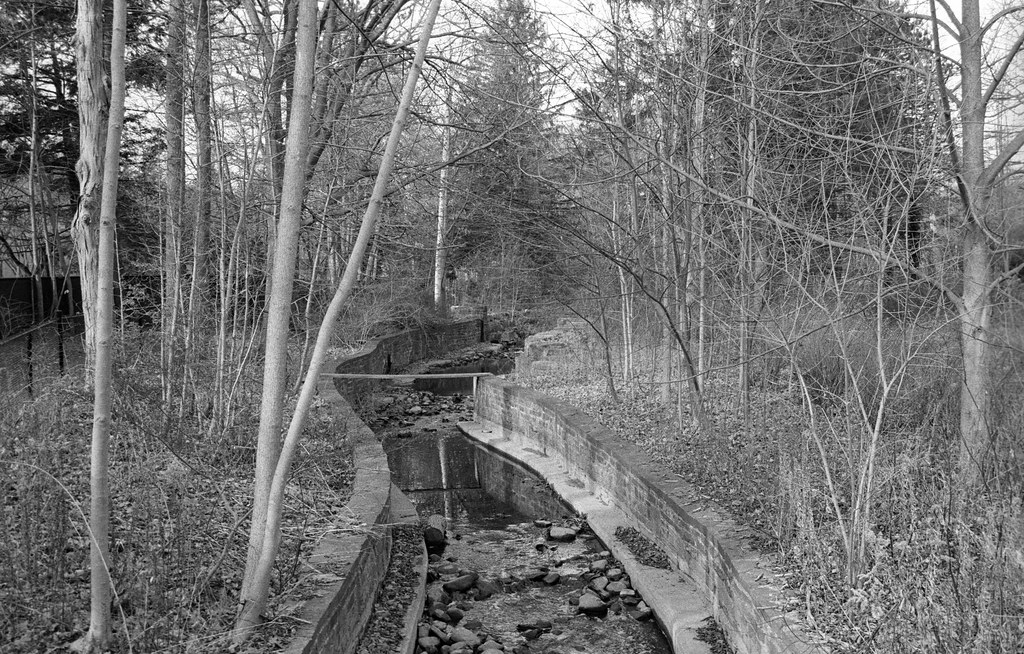In the world of black & white developers, my exploration of different chemicals has been a lot of fun. And I’ve seen plenty of other odd developers, but one has always stood out as being one I’ve wanted to try, mainly because of its name. And that is R09 Spezial, which looks cool because of the ‘z’. While browsing, the Argentix website netted me a small bottle of this stuff. It took a while to trace precisely what this stuff is at the core because it has gone under many names and been produced by many companies. You can also find it as Rodinal Special, Compard R09 Studio and other names. Officially this bottle is Compard R09 Spezial, but at its core, I’m reviewing Agfa Studional. If you haven’t heard of Studional, that’s okay; I hadn’t either until recently. Agfa is best known for Rodinal, one of the oldest commercial developers in production. They also produced another favourite of mine, Atomal. But Studional is often overlooked, but it turns out it’s an excellent developer and worthy of being a part of the Agfa catalogue.

Technical Details
Manufacturer: Agfa
Name: Compard R09 Spezial
Primary Developer: Aminophenol
Type: Reusable or One-Shot
Mix From: Liquid




Handling
If you’re used to working with liquid concentrate, working with R09 Spezial will be easy. It’s a thin liquid that is colourless, and it pours easily. Pour in the concentrate and add water while mixing. The label on the bottle lists everything in a single 1+15 dilution. However, if you wish to be more economical, you can use either 1+30 or 1+31 dilutions. The trade-off is the development times; at 1+15, you have short times, some even under five minutes. While most people will advise avoiding times under five minutes, I have never had an issue with other developers. But if you want to increase these times to greater than five minutes, use the more dilute times. While not officially listed, they are available online, which I used for almost all the films I processed in R09 Spezial. The concentrate will last two years in the original bottle, with a working solution of 1+15 in an airtight container will keep for three months. In the 1+15 mix, the developer is reusable up to 10-12 rolls of 35mm or 120. Once you dilute it more than 1+15, it becomes a one-shot developer.




Qualities
Coming into a brand new developer (well, new to me) is always fun because I had no benchmark for this developer. While Rodinal is designed to be a sharp developer, R09 Spezial is designed as a fine-grained developer that balances out contrast and retains sharpness. Any developer who does all those things has to be unique, which probably explains the name Compard has adopted. And you know, it does exactly what it says on the bottle. I’m surprised this developer isn’t better known! While in many conditions, you can shoot the film stocks at box speed; you can also get excellent results through push and pull processing. And I certainly put R09 Spezial to the test with my film choices, including two that are often given a bad rap, Fomapan 200 and 400. And the developer certainly impressed me with the first two rolls of Ilford HP5+ that I pulled from the tank; the images were clean, with excellent contrast and grain structure. Nothing too severe but well balanced between fine-grain and edge sharpness. And the visible grain has a good structure. When used for push processing, things got a little gritty, but when paired with Fomapan 400, it certainly gave a moody look with a high-contrast look that matched the dull, heavy overcast day when I was using the film.




Applications
I’m a little torn on this developer. From everything I’ve read about Studional is that it’s designed as a general-purpose liquid developer. It reminds me a lot of HC-110/Ilfotec HC, but with only a single dilution that can be reused (1+15). But further use as a one-shot developer with a 1+31 (1+30) dilution. These two dilutions line up with Dilution A (1+15) and Dilution B (1+31) for HC-110 from the syrup. And yet, now that it’s only available in small quantities, I’m hesitant to call this a general-purpose developer. Plus, it’s a little more than your average HC-110 or D-76; it has some qualities that help keep the grain down and does push/pull development without too much trouble or problems. Studional does wonders for fast films, Ilford HP5+, Kentmere 400 and even Fomapan 400. And while I did push Foma 400 by a stop, it did a good job of compensating. It also handled Fomapan 200 far better than other developers I’ve seen. The slowest film I tested on this one was Kentmere 100, and it again did not disappoint. Sadly I did not get a chance to try Studional on slower films. But Studional works well with traditional cubic-grained films and modern tabular-grained films.




Lowdown
R09 Spezial never crossed my radar until I randomly came across it while browsing the Argentix website, and I’m glad I did. I like this developer, and while it won’t become a standard bottle in my chemistry set, I see myself using it again. I mostly threw fast films at it due to the season I was using it, the dull grey days of winter. I hope to get it again in the Summer to see how well it handles slower films, including the iconic APX 25. While it’s hard to find it under the original name of Studional, you can find it under the Compard branding as R09 Spezial, and Agfa still manufactures it. This explains why a company like Adox hasn’t picked up the IP for Studional, although I hope that they can, at some point, keep this developer alive. At this point, I’ve only been able to find the developer for sale in small bottles and only in online speciality photographic shops. If you are looking for something a little different and unique, give R09 Spezial a shot. You might be surprised.




Recommended Reading
Don’t just take my word on R09 Spezial; check out these other blogs on the subject!
Photomi7ch – R09 Special Studional Three Months On
I like the results… they are “rodinal-ish” and it’s still one of my go to developers. From Argentix?
Thanks! Yes from Argentix, but I got the last two in stock bottles!
It is also available from Bellini under the name Hydrofen. Right now it is my standard B&W developer and has yet to let me down on any film stock I have tried it on, usually at 1+39 dilution
Oh that’s good to know!
Alex , ti seems you have used it in costant rotation with Foma 400 : do you mean in Jobo Drum or some other manual or motorized approach? If you do, did you try only with Foma or also with HP5? Do you think it is useable with rotation in Jobo Drum ?
That’s correct, I use a B’s Processor that spins at approximately 10rpm so I cut the time listed by 10%. Since Jobo systems allow for adjustment of RPM it’s perfectly usable with a Jobo!